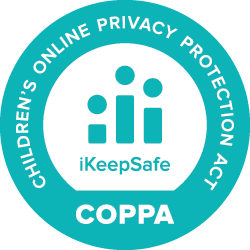Back Through Time
Today's fossil fuels and most plastic products originated with ancient sunlight. In this activity, you explore the properties of petroleum and its history.
Facilitation Tips and Potential Student Answers
Be sure to scroll to the bottom of the Educator Overview until you see STUDENT CONTENT BELOW THIS LINE. Interleaved in the Student Content section, you will see educator facilitation tips and potential student answers displayed in red, italic text when applicable.
Resource Title:
Back Through Time
Description:
Today's fossil fuels and most plastic products originated with ancient sunlight. In this activity, you explore the properties of petroleum and its history.
Target Grade Level:
Grades 5-8
Discipline or Course (Audience):
Science
Time Frame:
Two 90-minute class periods without extensions
Suggested Grouping:
3-4 students
Key Vocabulary:
Petroleum, phytoplankton, photosynthesis
Educator Prep:
Recommended Student Background Knowledge and Skills:
- Students should have a basic understanding of photosynthesis. Web Link - Illuminating Photosynthesis can provide some information in an engaging format.
Preparation Directions:
- Gather materials
- Divide students into groups of 3-4.
- Confirm students will have access to computers and internet.
Remote Learning Adaptations:
This activity can be conducted as a demonstration over video conferencing.
STUDENT CONTENT BELOW
500 million years ago, life on Earth was very different from how it is today, but there were some similarities. The seas were filled with life known as phytoplankton, and types of phytoplankton still exist in Earth's oceans. Through the process of photosynthesis, these ancient plankton used sunlight and water to make carbon that was used for food. Eventually, the plankton died and settled on the floor of the ocean. The energy of the sunshine trapped by these organisms is still available for us to use. In this activity, you will compare the physical properties of a drop of oil with a drop of water. Next, you will design a poster that traces the history of a drop of petroleum from photosynthesis in prehistoric plankton through extraction and use today.
Show students several images of the Earth in the Paleozoic Era, such as
Web Link - Earth during the Late Permian
and
Web Link - Life during the Paleozoic
. As a group, make a list of what they think the Earth would have been like during that time (warm seas, active volcanoes, no birds, reptiles and mammals that we are familiar with today).
Explain that the oceans were full of life including tiny organisms like the bacteria and algae we know today. These organisms could use the energy of the sun and make food for themselves. Marine organisms that use the sun to make their own food are called phytoplankton. Ask: What other organisms can you think of that use the sun to make food? (plants) What is the name for the process? (photosynthesis)
Explain that some of the food was in the form of carbohydrates. Can you name some carbohydrates? (cookies, pasta, bread)
As these organisms died, they took their trapped carbon with them to the bottom of the ocean and after millions of years, this material became fossil fuels like oil.
Materials:
- Supporting Material - Student Data Sheet: Back Through Time
- 2 droppers
- 10 mL non-toxic mineral oil
- 10 mL water
- square of wax paper
- stir sticks
- poster paper
- markers
- goggles
Safety Notes:
- When using technology, engage in safe, legal, and ethical behavior; this applies to devices (hardware), application or programs (software), and interactions with others.
- Be sure to follow all instructor directions for the activity.
Part 1: Compare Properties of Oil and Water
Introduce the activity by explaining that each group of students will be recording observations as they place drops of water and oil on a piece of wax paper. Conduct activity with students, helping as needed.
- In small groups, discuss what you already know about the physical properties water and oil.
- Place one drop of oil on the wax paper and one drop of water on the second piece of wax paper.
- Record observations using Supporting Material - Student Data Sheet: Back Through Time .
- Add another drop of oil and water to each of the samples. Record observations.
- Repeat this process at least five more times.
- Do you know the term for the property that makes the drops look a bubble?
- Using the data from the table, complete the Venn diagram comparing and contrasting the drop of oil with the drop of water.
Table 1: Observations of Physical Properties
Oil |
Water |
Part 1: Compare Properties of Oil and Water
After students compare and contrast water and oil, explain that the ancient plankton used some of the energy for their food. The consumers who ate the plankton also used some of the energy. When the plankton died and fell to the bottom of the sea, the organic matter accumulated in layers, and became trapped in clay, sand, and rock. Millions of years later, this matter can be used as a fossil fuel. The ancient sunshine trapped by the phytoplankton 500 million years ago can be extracted and refined for use. Have students conduct research and design a poster that traces the history of a drop of oil from photosynthesis in the prehistoric plankton through extraction and use today.
- Using the internet and other library sources, research how petroleum is formed, extracted from the ground, and then used. Design a poster that illustrates this process, tracing the history of a drop of oil. Your poster should begin with photosynthesis and the prehistoric plankton.
- In your group, make the final touches to your poster. Be sure to include labels and captions.
- Display your poster in the classroom. Display posters around the room and have students conduct a “gallery walk”.
- Take a look at the posters that each of the groups have designed. After the “gallery walk”, discuss with your group what changes you might make to your own poster, based on the information presented by other teams. Add any new information that might enhance your story of the history of a drop of oil.
Students will then modify their posters with new information from other posters. Be sure to have a class discussion about the history before students modify their posters to make sure that all groups have a clear understanding of the process.
Reflect and Apply:
- What are some of the physical properties of oil?
- How are these properties similar to and different from physical properties of water?
- Explain how the carbon trapped during the photosynthesis process in ancient phytoplankton can still be used today.
Extension:
- Because the oil and gas we use took so long to make, these materials are too valuable to just use once. Some mechanics use recycled motor oil to lubricate automobiles. Interview an auto mechanic to investigate the properties of recycled oil and how it differs from first-use motor oil.
- Journal Question: The energy of ancient sunshine that was trapped by tiny phytoplankton 500 million years ago is now available for us to extract and refine for use. Why is this resource considered to be non-renewable? What are some of the ways we use this resource? What are some of the ways we recycle this resource?




